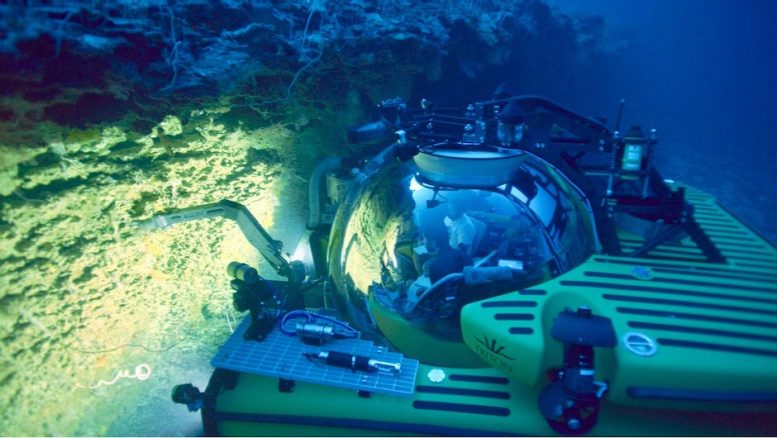
UM Rosenstiel School marine geosciences professor Sam Purkis, and biology professor Giovanni Chimienti, along with a submersible pilot, observe the chasm in the Gulf of Aqaba that was likely the result of a landslide 500 years ago. Credit: Photo courtesy of OceanXplorer
UM Rosenstiel School scientist Sam Purkis discovered evidence of a 500-year-old landslide, and a sizable tsunami, that could have implications for coastline development of coastlines in Egypt and Saudi Arabia.
An earth scientist from the University of Miami Rosenstiel School of Marine and Atmospheric Science discovered evidence of an ancient underwater landslide and associated tsunami in the Gulf of Aqaba, a subsidiary of the Red Sea, that should serve as a warning for many nations in the Middle East.
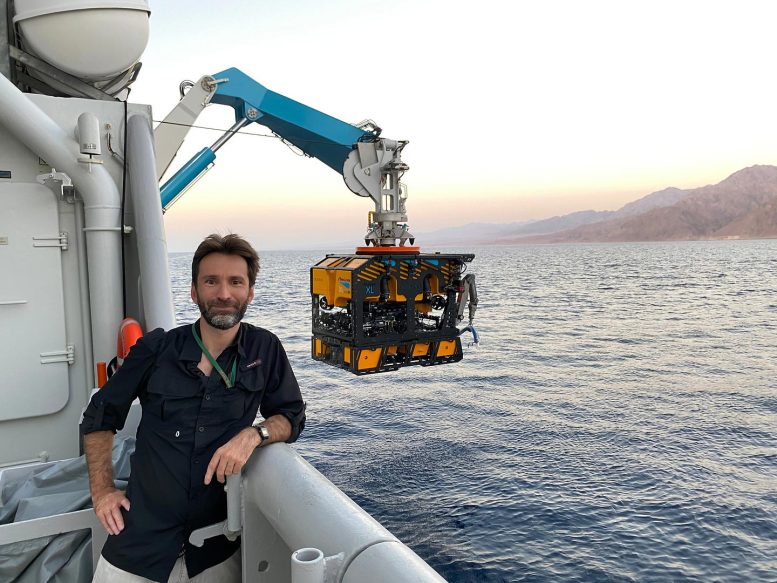
Professor Sam Purkis on the OceanX research vessel in 2020. Behind him is a robot submersible, one tool used to collect samples in the depths of the ocean. Credit: Photo courtesy of OceanXplorer
Sam Purkis, professor and chair of the Department of Marine Geosciences, spent four weeks aboard the OceanXplorer research vessel in the region. As he and a fellow scientist were ascending from 3,000 feet (900 meters) during a submersible dive, Purkis noticed a startling break in the seabed. It was an unexpected find, although not out of the question for the Red Sea, which was formed by the separation of the African and Arabian tectonic plates 30 million years ago.
“Immediately, I realized that what we were looking at was the result of some geological force, which had broken the seafloor,” said Purkis.
Purkis then began a scientific journey to learn more about the chasm, and took rock samples, which revealed that it had been created by a landslide that likely occurred 500 years ago. He was also able to find evidence from sediment collected north of the chasm, which showed that a tsunami was likely spawned by the landslide.
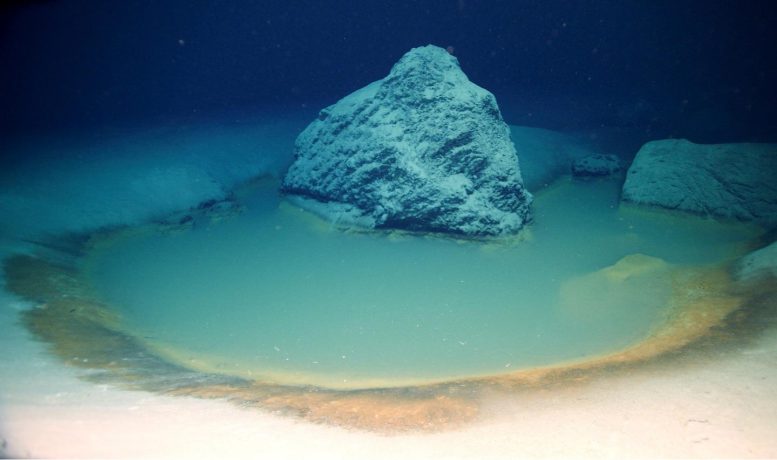
The first brine pool observed about a mile underwater in the Gulf of Aqaba, where Purkis took sediment samples to prove that the landslide also prompted a tsunami. Credit: Photo courtesy of OceanXplorer
The study, “Tsunamigenic Potential of an Incipient Submarine Landslide in the Tiran Straits,” published recently in the journal Geophysical Research Letters of the American Geophysical Union (AGU), predicts that future movement of the seabed might trigger more tsunami in the Gulf. Therefore, the nations along its coasts—including Egypt, Jordan, Saudi Arabia, and Israel—need to ensure that early warning systems are in place for both earthquakes and tsunami.
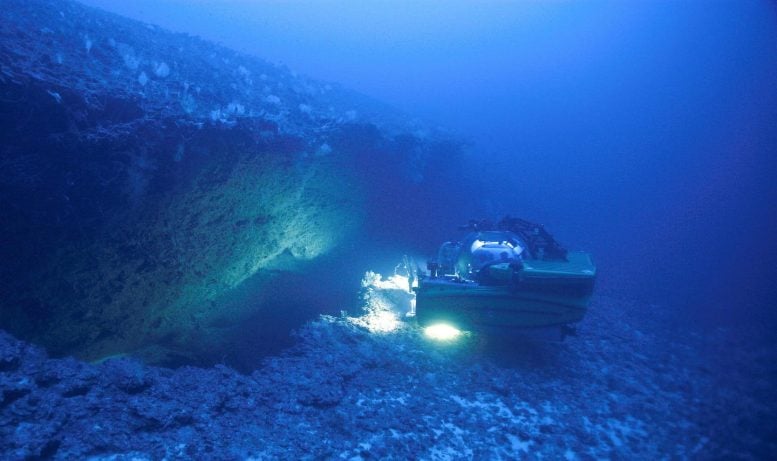
University of Miami marine geosciences professor Sam Purkis, and biology professor Giovanni Chimienti, along with a submersible pilot, observe the chasm in the Gulf of Aqaba that was likely the result of a landslide 500 years ago. Credit: Photo courtesy of OceanXplorer
“Just a little shake in the wrong place and the whole wall could fail, leading to a much larger tsunami than occurred 500 years ago,” Purkis said. “That area of Egypt, as well as Saudi Arabia, which are urbanizing so rapidly, have certain hazards which haven’t been previously recognized, but they need to be, to avoid a future catastrophe.”
Reference: “Tsunamigenic Potential of an Incipient Submarine Landslide in the Tiran Straits” by Sam J. Purkis, Steven N. Ward, Hannah Shernisky, Giovanni Chimienti, Arash Sharifi, Fabio Marchese, Francesca Benzoni, Mattie Rodrigue, Maureen E. Raymo and Ameer Abdulla, 3 February 2022, Geophysical Research Letters.
DOI: 10.1029/2021GL097493
The entire OceanXplorer research voyage was funded by Neom, a company developing the Saudi Arabian coastline.

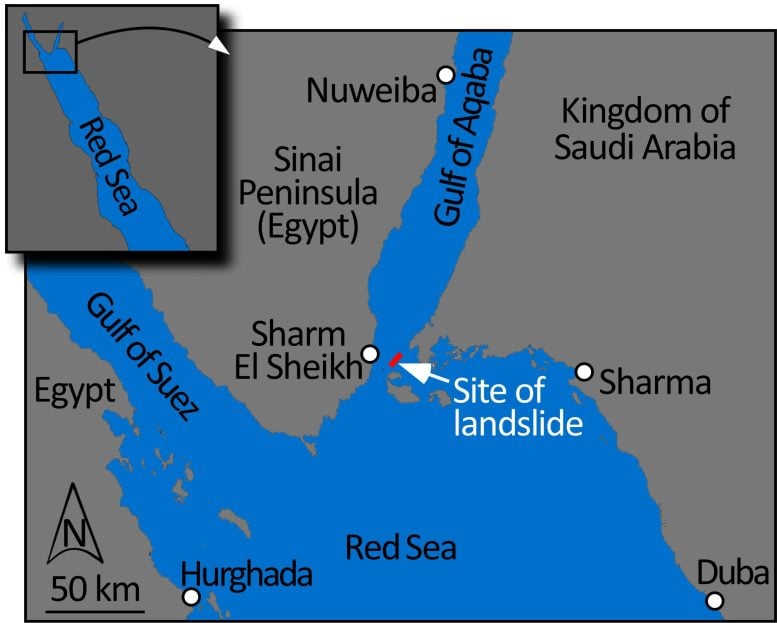

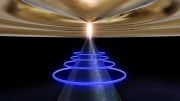
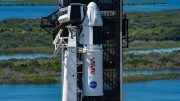



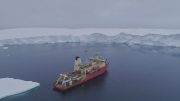
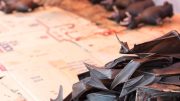
Be the first to comment on "Ancient Underwater Landslide Discovery Could Help Middle Eastern Nations Realize Tsunami Hazards"